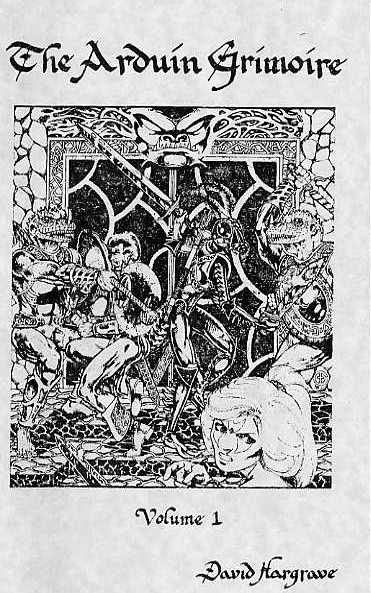13th Age
What 13th Age Owes to Dave Hargrave
 13 Age, and especially 13 True Ways, owes a surprisingly large amount to Dave Hargrave. In the 70s, Hargrave wrote the Arduin trilogy, three rulebooks that showed you how to run a high-energy D&D campaign filled with brilliant and over-the-top details. In effect, he was publishing d20 source material before it was strictly legit. Rob Heinsoo and I are both fans of Arduin from way back, and it shows.
13 Age, and especially 13 True Ways, owes a surprisingly large amount to Dave Hargrave. In the 70s, Hargrave wrote the Arduin trilogy, three rulebooks that showed you how to run a high-energy D&D campaign filled with brilliant and over-the-top details. In effect, he was publishing d20 source material before it was strictly legit. Rob Heinsoo and I are both fans of Arduin from way back, and it shows.
13 True Ways is a lot like the Arduin books in that it is a grab bag. It’s not a splatbook, one of countless books composed on the same template and describing a neatly circumscribed section of the game world. It’s more like a highlights reel. It’s the best stuff we can think of for a campaign. That’s what the Arduin trilogy was like. Cool classes, monsters, places, and lists. Yes, even the lists were cool, summarizing notable taverns, famous dungeons, numerous pantheons, and more. If you’ve seen our Kickstarter video, I bet that sounds familiar.
Hargrave also imbued his Arduin rules with his distinct personality. He speaks directly to the reader, explaining how he runs his campaign and why. He takes incidents from actual play as fodder for his GM advice. The “by gamers for gamers” style was pretty common back then. Today, Heinsoo and I wouldn’t want to write our stuff any other way.
The big surprise, however, is how many of the mechanics that 13th Age uses were in Dave Hargrave’s 1980 RPG, The Arduin Adventure. This boxed, beginner RPG was Hargrave’s answer to TSR’s mega-selling “blue box.” It was a d20-style RPG simplified so that a beginner could pick it up. All damage was flat. A warhammer always did 7 plus your Strength bonus every time you hit. As a teenager, I thought this rule was unbelievably stupid, and we rolled damage instead. In 13th Age, monsters deal flat damage. I’ve learned something over the years. In Arduin Adventure, a character gets bonuses to ability scores by class as well as race, and bonuses are assigned to one ability or another. 13th Age is pretty similar. In Hargrave’s game, a character advances a level after a certain number of game sessions, and a character’s attacks and saves go up by +1 each level. That’s pretty much like 13th Age. Spells that take out their targets have hit point thresholds, much as in 13th Age. Over the years, I have looked back at Arduin Adventure as an inspiration, but it wasn’t until I reread the rules recently that I saw how much we had cribbed from Hargrave.
PS: Hargrave’s plug of Alarums & Excursions in the Arduin trilogy got Rob to subscribe, and that’s how we met. The rest, as they say, is history.



